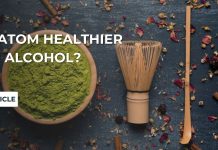It has been a few years since Kratom has taken a toll over the internet. A lot has been heard about this new Asian herb, and the sources publishing these articles contradict each other depending on whom they believe. So, it must have crossed your mind several times, what exactly is Kratom and what is all the hype about?
What is Kratom?
Kratom is a tree located in Southeast Asia, and it has been under use for almost hundreds of years now. The leaves of Kratom have been used as a pain reliever in the ancient times and can be consumed raw, taken as a tea or in the form of tablets and capsules, or even liquids.
One of the major recent uses of Kratom is the substitute for opioid, and it is used to deal with opiate withdrawal. According to Organic Facts, Kratom strengthens and builds resilience of the immune system. The leaves of Kratom are a natural source of antioxidants because of its antimicrobial activity and free radical scavenging.
Along with that, Kratom also acts as an energy booster by affecting the hormone levels in your body and optimizing various metabolic processes. It does this by increasing the flow of oxygenated blood to parts of the body that requires it. Furthermore, Kratom is used by traditional practitioners to increase fertility and libido thus acting as a sex stimulant.
Some psychological disorders such as depression, anxiety or chronic stress happen because of the chemical imbalances in your body. The use of Kratom as anxiolytic substance fixes the chemical imbalances hence helping to deal with anxiety, depressive thoughts, and stress.
What are the different types of Kratom?
There are four popular types of Kratom for pain relief:
- Borneo
- Maeng Da
- Bali
- Indonesian aka Indo
Types of Kratom that help to reduce depression:
- Thailand aka Thai
- Malaysian aka Malay
- Maeng Da
- Bali
- Maeng Da
- Borneo
- Indo
Is it beneficial or a controversial herb?
Various sources have a difference of opinion on this matter. Many researchers support Kratom as a beneficial herb whereas organizations such as the FDA are in favor of banning this Asian herb.
According to DEA and CDC Kratom may be beneficial at low doses, but it can lead to psychological problems and addictions when consumed in large doses. CDC reported that the use of Kratom between 2010 to 2015 brought 42% cases with some symptoms which were not life-threatening and were cured with treatment. Whereas 7% of the cases of Kratom consumption were identified as life-threatening and DEA reported 15 cases of Kratom usage that were related to death between 2014 to 2016.
On the other hand, recent research conducted by Fluyua and Revadigar in 2017 stated that ‘Data analysis suggested that kratom possesses some benefits such as stimulant and sedative effects as wells as antinociceptive effects.’ It further mentioned Kratom to inhibit pro-inflammatory mediator release, boost immunity and act as an antidepressant. But along with that it also said some of the dangers of consuming Kratom which includes seizure, impaired memory function, coma, and death. Lastly, the study stated that it is yet to determine if the benefits outweigh the side effects or vice versa.
Swogger and Scott Hemby, chair of basic pharmaceutical sciences in High Point University in North Carolina agreed to the fact that Kratom’s main compounds bind to opioid receptors. But Hemby also added, “They don’t give the full effect of a drug like morphine. It activates the receptor, but not to the extent that morphine does. Binding doesn’t mean there’s an equivalent effect.”
On the other hand, Swogger said, “It doesn’t appear to be addictive in the way that classical opioids are, but there is a withdrawal syndrome for people who have been using it heavily.”
Researchers have advised FDA to slow down their ban on Kratom until more scientific evidence can be collected. They feel that if Kratom is removed from the market, it won’t do much good because of its potential as an alternative to opioids. Swogger also added that since opioid is more harmful, banning Kratom may turn out to be problematic for people who are trying to deal with their opioid addiction.
The FDA recent stance on the Kratom
FDA has now released a statement warning the consumers of Kratom that it can lead to risks of abuse, addiction, and dependence. It has been said that FDA hasn’t approved Kratom as a useful treatment for opioid withdrawal because of its dangerous effects. FDA also sent a notification to one of the representatives of Industrial Chemicals LLC telling them about the misleading claims that were being made regarding the legal status of Kratom.
The FDA commissioner Scott Gottlieb, M.D said in one of his statements, “Kratom is not a safe, benign plant. Data continues to provide strong evidence that Kratom compounds are opioids with potential for addiction and abuse. At a time when we face an opioid epidemic of devastating proportions, manufacturers should not be allowed to mislead consumers into believing Kratom products are a ‘safe’ alternative to prescription opioids or that Kratom is an effective therapy for opioid use disorder.”
He also said that he is concerned that people may use Kratom as an alternative to opioid addiction and hence won’t be going for safer and reliable treatments.
One of the reasons why FDA believes that Kratom is dangerous is because of a computational model through the Public Health Assessment using Structural Evaluation method. Lyndsay Meyer, a spokesperson at FDA, told Rolling Stone, “The data from the PHASE model shows us that Kratom compounds are predicted to affect the body just like opioids. Compounds in Kratom make it, so it isn’t just a plant – it’s an opioid.”
AKA and scientists response on FDA statements
It was published on PR News Wire that AKA has filed a formal demand to FDA to revoke the false claims they have been making about Kratom. Here is a part of the AKA statement: “For years, the FDA has published scientifically inaccurate information on the health effects of consuming Kratom, directly influencing regulatory actions by the DEA, states, and various local government entities. AKA believes the FDA health advisory on Kratom will lead to more state and local bans, all based on discredited, incomplete, and mischaracterized scientific claims…”
AKA also says that some of the facts have not been acknowledged by FDA and is at the staff’s disposal. They also mentioned that there is evidence of common old practice in Southeast Asia. The data which was collected by the US, and according to the recent four surveys, thousands of Kratom users indicated that ‘Kratom is a more likely a path away from opioids than a path to opioids.’ This statement was passed by Jack Henningfield, Ph.D. who is the worlds’ leading experts on addiction, cognitive, behavioral and central nervous system effects of drugs.
It is mentioned on American Kratom Association’s website that Kratom is not a habit-forming drug until or unless taken in high doses for long periods of time. Kratom users may start depending on it if they take it on a long-term basis which will be similar to depending on caffeinated drinks. Hence it is better to consume Kratom while taking constant breaks in between or gradually lessening its dosage.
AKA conducted a petition in 2016 in which 142,000 people from the US signed it. Along with that, 1.1745 doctors, vets, law officers and scientists told DEA that they do not want a ban on Kratom.
An article published on AKA’s website on 6th March 2018 revealed a groundbreaking new study by a molecular biologist, Dr. Jane Babin which has proved that FDA’s claim of 44 deaths from Kratom is fake.
This is what the study concluded, ‘None of the case reports released to date support the evidentiary standard required by the CSA to prove there is a risk to the public health that relies primarily on the FDA claim of “numerous deaths associated with Kratom.” In fact, the data shows only that a relatively small number of individuals died from a variety of actual causes related to underlying health issues, abuse of prescription or illicit drugs either at toxic doses or taken in combination when contraindicated. The use of Kratom by these individuals has no medical or statistical significance in assessing the safety signal required for scheduling.’
What Kratom supporters say about recent FDA statements?
With the FDA statements against Kratom, the supporters of Kratom have been tremendously disappointed, and there has been an outrage. WebMD mentioned that according to the advocates of Kratom, “Kratom offers relieve pain, depression, and anxiety.”
Members of the public have sent numerous comments to DEA asking them to reschedule their action and provide further information before taking any further step towards banning Kratom.
Let us look at more studies on Kratom so a better outlook can be formed regarding the Asian herb. An online survey conducted on ‘Patterns of Kratom Use and Health Impact’ at College of Pharmacy, University of Florida found out that Kratom is commonly used by middle-aged population who are between 31–50 years old and middle-income population who were earning $35 000 and above. The survey also helped the researchers conclude the purpose of Kratom use. It was found that 68% of the population use it for self-treating pain and 66% for mental and emotional problems.
Another useful fact discovered that Kratom did have some adverse effects such as, nausea and constipation and it usually occurred when people took high doses which is 5g or more and when use more frequently in a week which is 22 or more times a week. This proves that Kratom works like any other medicine that is, when taken in high doses than required it will have an adverse effect on the body and this is in no way proves that Kratom can be harmful to treatment.
A survey was conducted by Pain News Network in which 6,400 people participated and some even provided detailed comments regarding their usage of Kratom. The survey showed that 51% use Kratom as a treatment for chronic and acute pain, 14% use it to treat anxiety, and 9% for depression and opioid and only 2% use Kratom for recreational purpose. Hence it can be seen that Kratom is widely used as a self-treatment medication rather than in the form of a drug. When participants were asked if they think Kratom is a harmful substance 99% answered no, and 1% responded somewhat.
Another evidence tells us that Kratom is not a harmful drug. When participants were questioned, ‘Can you get high from using Kratom?’ 83% said no 21% reported a little and 1% said yes. This only proves that Kratom does not work like other illegal drugs and those people who do get high it could be due to individual differences.
A case study published on RollingStone about a 34-year-old bartender who was taking medication for his anxiety and depression, but the result of that medicine made him irritable and aggressive. Two years ago, when he moved to Austin, he was recommended about Kratom as a botany dietary supplement by some of his friends. After consuming Kratom for some time, he started to feel balanced in his life and felt any other normal human being. He now takes either Borneo or Indo which can be digested in the form of powder and works as a sedative and concentration improves.
“I’ll take it, jump in the shower, eat something, drink coffee, and head into my 12-hour shift. I never feel high. I just see things clearer,” the 34-year-old bartender said.
With such prominent pieces of evidence, you can see that Kratom can be a useful medication for treating pain, depression and anxiety and its harmful effects when taken in high doses.









